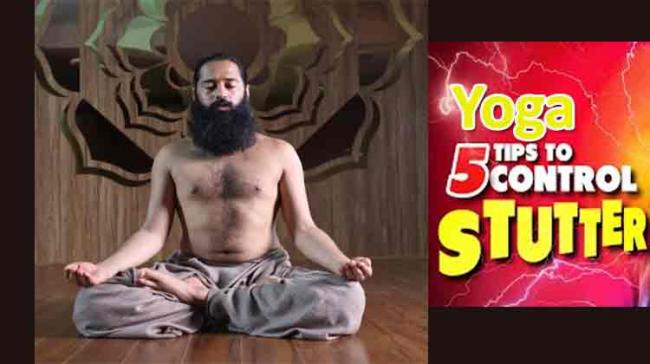How to Stop Stuttering: 5 Yogic Tips That Can Help

A stammer also called a stutter is especially common in young children. For most children, this problem of stammering is cured without any specific treatment. However, there are also cases where many older children and adults may have a stammer that persists as a lifelong condition. Yoga can help as an effective treatment for stammering as it helps the person feel relaxed and confident. Along with yoga, you can also engage speech and language therapists for proper care and treatment.
Following are some of the ways that yoga can be used as therapy.
1.Ujjai Pranayama
Method
- Sit in any comfortable pose (such as Sukhasan, Ardhapadmasan or Padmasana)
- Straighten your back and close your eyes
- Place your left palm on your knee facing up (in Prapthi Mudra)
- Contract your throat and breathe in from your nose
- As you inhale, you must make an audible sound
- After you have slowly filled your lungs with air, make an ‘O’ shape with your lips and exhale through it
Duration You may begin by practicing this breathing technique for five minutes a day and gradually increase it with time.
2.Shankh Mudra
- Sit comfortably in Vajrasana (Thunderbolt Pose) on the floor, roll your shoulder back, and lengthen the spine.
- Bring both your hands in front of the solar plexus chakra facing tummy.
- Now wrap the four fingers of the right hand around the left thumb.
- Keep four fingers of the left-hand straight and pointing up. Roll the encircled thumb a little to adjust it in upwards.
- Now once left hand all fingers pointing up, join the tip of the right thumb with the middle finger of the left hand.
- Now your hands will look like a conch shell. Hold this arrangement of fingers and bring your hands at the heart center, exactly at the breastbone.
- Close your eyes while chanting OM in the mind and focus on deep breathing. You can also listen to OM chanting and focus on the echo it produces.
- Once done with the left thumb encircled, you can reverse the position of fingers and practice it for another round.
Yoga Asanas
3.Baddha Konasana
- Begin by assuming Dandasana
- Fold your legs and bring the soles of your feet together
- Pull your heels closer to your pelvis
- Gently push your knees down
- Empty air from your stomach, lean your upper body forward and place your forehead on the floor
4.Mandukasana
- First, you need to sit in Vajrasana which is also known as thunderbolt pose. It is a simple kneeling pose.
- Now, with your hands, make a fist with the thumb tucked well inside your four fingers.
- Place your fists on the abdomen region on both sides of your navel.
- Now exhale and start pulling the abdomen inside slightly. After this, bend forward slowly and start pressing the navel with your fists.
- Keep your back as straight you can get, and keep looking forward in your bend position.
- Now keep the breath well outside in this pose and maintain it for a period of time that is comfortable for you.
- Now to release this pose, inhale and then slowly raise your trunk up to the kneeling pose and bring your hands back to your sides and then relax.
5.Halasana
- Lie on your back with palms beside your body
- Press your palms into the floor to lift your legs up and drop them behind your head
- Use your palms to support the back if needed
Stammering is a condition that is known to usually start in childhood when the child begins developing speaking skills. This is referred to as developmental stammering. Some of the causes for stammering include family genetics, childhood trauma, or some form of speech impediment.





